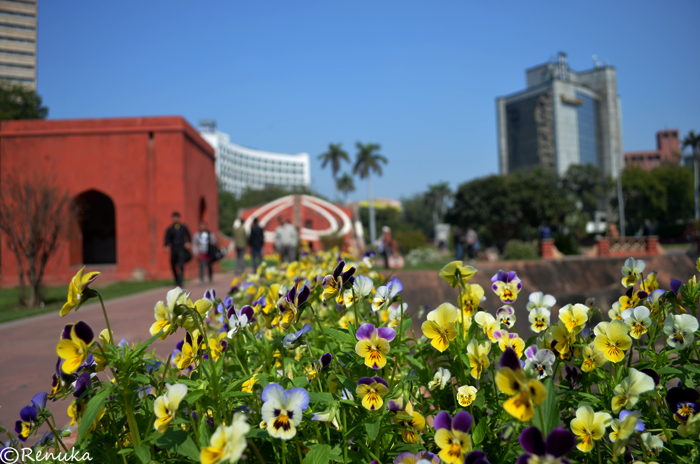Jaunting Down The Jantar Mantar Road, New Delhi

Well, minus the humbug, Delhi is definitely a city with a certain trademark charm. My last few months in the city were about admiring and exploring its architectural beauty. My post, 5 things to love about Delhi, is dedicated to my tryst with the city in the last decade.
Jantar Mantar Road is one of the nice glimpses of the capital. It’s a place that allows you to walk around casually and feel good about being in Delhi. If you get down at Central secretariat metro station and walk down a little distance, there are quite a few interesting strolls around – Janpath market, Rajpath and India Gate.
| Jantar Mantar Site |
It was a random Sunday, and I did not plan on anything specific. I was walking towards the Janpath market, still thinking where I should be going for some good pictures, and the next moment I found myself heading towards Jantar Mantar. It is quite funny that after living in the city for more than 10 years, I had never visited Jantar Mantar before.
Although I had been to Janpath and the vicinity around quite a few times, I never managed to take note of Jantar Mantar! Anyway, it’s better late than never! Besides, there could not be a better time to visit it. Since it was February, spring had added beautiful colours with blooming flowers and chirpy butterflies. The site looked more inviting! I would like to mention that February is a good month to visit Delhi – sunshine is mild, breezes are calm and even the people are more relaxed. You get a subtle good feeling about going around the city and enjoying it at your own pace.

If you are at Jantar Mantar Road, take an insightful walk at Jantar Mantar for about 20-25 minutes. Learn about its unique history and take back some beguiling impressions. There are quite a few hangouts on the road. I usually like to have a good cup of coffee after a photo walk. So, I would suggest Barista would be a decent place for a chat and quick run-through of the day gone by. There is also Hotel Park right opposite to the Jantar Mantar site.
If you are at Jantar Mantar Road, take an insightful walk at Jantar Mantar for about 20-25 minutes. Learn about its unique history and take back some beguiling impressions. There are quite a few hangouts on the road. I usually like to have a good cup of coffee after a photo walk. So, I would suggest Barista would be a decent place for a chat and quick run-through of the day gone by. There is also Hotel Park right opposite to the Jantar Mantar site.
In fact, there are many such places in Delhi, where you can extract a lot of history, get charmed by the architecture and the heritage and go back home with a smile. So, I would suggest that a tourist should make wonderful memories in the capital and a local should see it like a tourist.
Jantar Mantar is just one of the famous historical sites for a local in Delhi, but for a tourist, it’s something to take back home. I frequented that part of the capital so many times for different purposes, but never cared to stop and appreciate a beautiful legacy. It’s the rush, the everyday juggle that keeps you away from the real gems of your city! But I think, it’s all up to you – how you see your city.
Also read: 10 Interesting Facts About Humayun’s Tomb
Life should be lived in its each bit and pieces. Thus, brush aside the routine and settle for some simple pleasures of life, which could be closer than you thought.
| A tourist/photographer capturing the intricacy of Jantar Mantar |
A bit of Wikipedia about Jantar Mantar
The Jantar Mantar is located in the modern city of New Delhi. It consists of 13 architectural astronomy instruments. The site is one of the five built by Maharaja Jai Singh II of Jaipur, from 1724 onwards, as he was given by Mughal emperor Muhammad Shah the task of revising the calendar and astronomical tables. There is a plaque fixed on one of the structures in the Jantar Mantar observatory in New Delhi that was placed there in 1910 mistakenly dating the construction of the complex to the year 1710. Later research, though, suggests 1724 as the actual year of construction.
The primary purpose of the observatory was to compile astronomical tables, and to predict the times and movements of the sun, moon and planets. Some of these purposes nowadays would be classified as astronomy.
Do you enjoy visiting such unique heritage sites?
Enjoyed this post? Subscribe to receive ‘new post’ update straight in your inbox!